Professional, peer-reviewed papers about radiometric dates from the perspective of a recent creation and global Flood within a biblical framework.
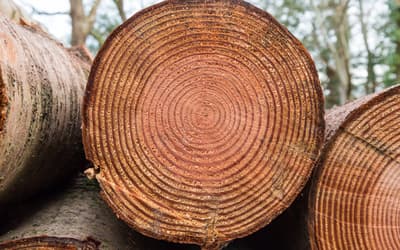
A Biblical Timescale for Radiocarbon Dating
Marshall Jordan • May 29, 2024
The low content of C-14 in fossil fuels implies that the atmospheric C-14 level in the pre-Flood world was less than 1% of today’s level, in contrast to the uniformitarian assumption.

The Place of the Exodus in Egyptian History: Further Comments
Anne Habermehl • March 13, 2024
In this second of a three-part series, Habermehl further discusses the placement of the Exodus in Egyptian history and methodology.

Discrepancies Between Geological Field Relationships and Radiometric Isotope Ages
Herman Dorland • Dec. 8, 2021
If the Radioisotope Age (Dolerite) > Radioisotope Age (intruded succession) then there is a violation of the relative age inequality.
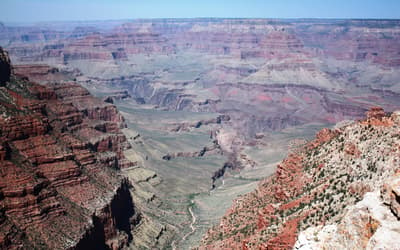
The Petrology of the Tapeats Sandstone, Tonto Group, Grand Canyon, Arizona
Dr. Andrew A. Snelling • June 23, 2021
The petrology of the Tapeats Sandstone is consistent with the global Genesis flood.

Problems with the U-Pb Radioisotope Dating Methods—3. Mass Fractionation
Dr. Andrew A. Snelling • Nov. 13, 2019
The evidence for grossly accelerated radioisotope decay during a past cataclysmic event such as the Genesis Flood has been well established.
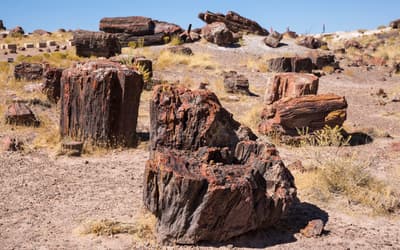
Fossil Grove and other Paleozoic Forests as Allochthonous Flood Deposits
Kurt P. Wise • Nov. 7, 2018
Fossil Grove offers multiple evidences in support of a huge forest biome floating atop the world’s pre-Flood oceans.

Problems with the U-Pb Radioisotope Dating Methods—2. U and Pb Mobility
Dr. Andrew A. Snelling • June 13, 2018
Since the amount of U and Pb mobility in most cases has been small, then the determinations can be used to provide useful relative ages.

Response to “No Replacement of Darwin: A Review of Replacing Darwin—The New Origin of Species”
Dr. Nathaniel T. Jeanson • April 25, 2018
Ironically, Frello has actually done me a great favor; his review ends up bolstering my original claims.

Problems with the U-Pb Radioisotope Dating Methods—1. Common Pb
Dr. Andrew A. Snelling • July 26, 2017
Problems remain in the interpretation of the measured Pb isotopic ratios to transform them into ages.

Determination of the Decay Constants and Half-Lives of Uranium-238 (238U) and Uranium-235 (235U), and the Implications for U-Pb and Pb-Pb Radioisotope Dating Methodologies
Dr. Andrew A. Snelling • Jan. 18, 2017
Without accurately known decay half-lives, all radioisotope ages cannot be accurately determined or be considered absolute ages.

Do Varves, Tree-Rings, and Radiocarbon Measurements Prove an Old Earth?
Dr. Jake Hebert , et. al. • Dec. 7, 2016
The BioLogos Foundation published a popular-level article by old-earth geologists Gregg Davidson and Ken Wolgemuth presenting arguments for an old earth.

Revisiting an Iconic Argument for Milankovitch Climate Forcing: Should the “Pacemaker of the Ice Ages” Paper Be Retracted? Part 3
Dr. Jake Hebert • Sept. 14, 2016
Despite its popularity, the Milankovitch hypothesis has many problems that are acknowledged even by secular scientists (Cronin 2010, 130–139).

Determination of the Radioisotope Decay Constants and Half-lives: Potassium-40 (40K)
Dr. Andrew A. Snelling • Aug. 3, 2016
Dr. Snelling documents the methodology and history of determining present decay constants and half-lives of parent radioisotopes used for dating methods.

Big Gaps and Short Bridges: A Model for Solving the Discontinuity Problem
Change Laura Tan • July 6, 2016
This paper argues that the issue with the origin of life and the origin of biodiversity is not an issue of time, though deep time is problematical.

Revisiting an Iconic Argument for Milankovitch Climate Forcing: Should the “Pacemaker of the Ice Ages” Paper Be Retracted? Part 2
Dr. Jake Hebert • May 25, 2016
Part I of this series presented a number of serious problems with the Pacemaker paper. It is necessary to also understand the Blackman-Tukey (B-T) method.
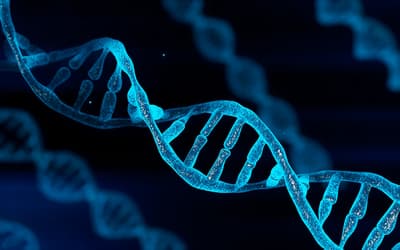
On the Origin of Human Mitochondrial DNA Differences, New Generation Time Data Both Suggest a Unified Young-Earth Creation Model and Challenge the Evolutionary Out-of-Africa Model
Dr. Nathaniel T. Jeanson • April 27, 2016
These results underscore the biblical model of human origins and simultaneously undercut the validity of the evolutionary out-of-Africa model.
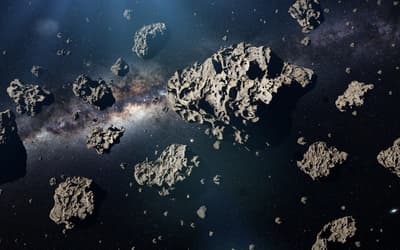
Radioisotope Dating of Meteorites: V. Isochron Ages of Groups of Meteorites
Dr. Andrew A. Snelling • Dec. 16, 2015
This contribution is designed to document the radioisotope dating data for groups of chondrites, stony achondrites, pallasites and mesosiderites, and irons.

Determination of the Radioisotope Decay Constants and Half-Lives: Samarium-147 (147Sm)
Dr. Andrew A. Snelling • June 10, 2015
Over the last 80 years numerous determinations have been made of the 147Sm half-life.

Radioisotope Dating of Meteorites: IV. The Primitive and Other Achondrites
Dr. Andrew A. Snelling • May 6, 2015
This paper documents radioisotope dating for meteorites, achondrites, angrites, aubrites, mesosiderites, and irons to further discuss significance of the data.

Determination of the Radioisotope Decay Constants and Half-Lives: Rhenium-187 (187Re)
Dr. Andrew A. Snelling • Feb. 25, 2015
If the Re-Os dating method is calibrated against an uncertain “gold standard,” then it cannot be absolute and cannot be used to reject a young-earth timescale.
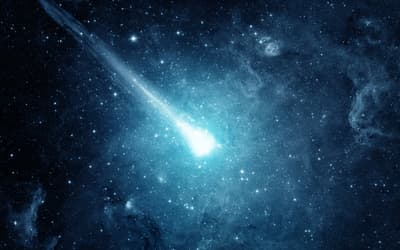
Radioisotope Dating of Meteorites: III. The Eucrites (Basaltic Achondrites)
Dr. Andrew A. Snelling • Dec. 31, 2014
This third paper documents the radioisotope dating data for more meteorites, so as to continue the discussion of the significance of these data.

The Petrology of the Coconino Sandstone (Permian), Arizona, USA
Dr. John H. Whitmore , et. al. • Dec. 10, 2014
In light of these new data, alternative depositional models for the Coconino should be considered.
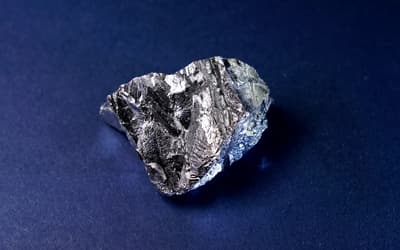
Determination of the Radioisotope Decay Constants and Half-Lives: Lutetium-176 (176Lu)
Dr. Andrew A. Snelling • Dec. 3, 2014
If the Lu-Hf dating method has been calibrated against the U-Pb “gold standard” with its own uncertainties, then it cannot be absolute.

Discerning Tyrants from Usurpers: A Statistical Baraminological Analysis of Tyrannosauroidea Yielding the First Dinosaur Holobaramin
M. Aaron • Nov. 26, 2014
In this study, I analyzed a theropod dinosaur group, Tyrannosauroidea, through the use of statistical baraminology.

Determination of the Radioisotope Decay Constants and Half-Lives: Rubidium-87 (87Rb)
Dr. Andrew A. Snelling • Sept. 3, 2014
In spite of numerous attempts for over 60 years to determine the 87Rb half-life and decay constant, there is still no consensus.
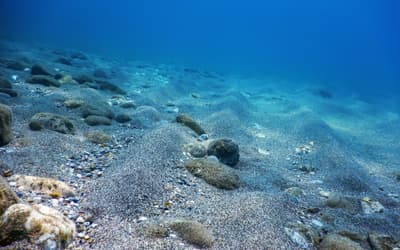
Circular Reasoning in the Dating of Deep Seafloor Sediments and Ice Cores: The Orbital Tuning Method
Dr. Jake Hebert • Aug. 27, 2014
The different dating systems are calibrated to one another: dates assigned to the seafloor sediments are used to date the ice cores, and vice versa.

Radioisotope Dating of Meteorites II: The Ordinary and Enstatite Chondrites
Dr. Andrew A. Snelling • Aug. 20, 2014
This paper documents the radioisotope dating data for more meteorites, so as to continue the discussion of the significance of these data.

Radiohalos in Multiple, Sequentially Intruded Phases of the Bathurst Batholith, NSW, Australia: Evidence for Rapid Granite Formation during the Flood
Dr. Andrew A. Snelling • March 5, 2014
There is evidence for rapid granite formation during the Flood.

The Origin of Oil—A Creationist Answer
John Matthews • Dec. 17, 2008
The dominant view of the origin of oil amongst western oil companies until 1969 was that it was due to the decay of living matter. Now other views are making themselves heard.

Radiocarbon Ages for Fossil Ammonites and Wood in Cretaceous Strata near Redding, California
Dr. Andrew A. Snelling • Dec. 10, 2008
Measurable radiocarbon has been detected in fossils from the earliest days of radiocarbon dating. When these data are put in perspective, their deadly significance to uniformitarianism is apparent.

Mars, a Testament to Catastrophe
Charles Creager, Jr. • July 23, 2008
The unlikely geographic relationship between these gigantic features suggests a cause and effect relationship between them. This implies a global Martian catastrophe comparable to the Genesis Flood.

Testing the Hydrothermal Fluid Transport Model for Polonium Radiohalo Formation: The Thunderhead Sandstone, Great Smoky Mountains, Tennessee–North Carolina
Dr. Andrew A. Snelling • March 26, 2008
The regional metamorphism, the hydrothermal fluid flows, the cooling of the regional metamorphic complex, and the formation of the Po radiohalos all had to have occurred within a few weeks.
Radiometric Dates on Answers Research Journal
Radiometric, radioactive, or radioisotope dating is a technique used to date rocks or carbon-bearing materials and ancient artifacts in which trace radioactive impurities were incorporated when they were formed. The method compares the abundance of a naturally occurring parent radioactive atom (called an isotope) within the material to the abundance of its decay products (daughter atoms), which form via radioactive decay. This method contains many assumptions, including that the rate of radioactive decay has been constant. This assumption allows researchers to use the ratio of parent/daughter isotopes to produce an “age” of the material in question.
Radiometric dating is the principal method used to produce ages of rocks, meteorites, and other geological features thought to be millions to billions of years old. This includes the ages of fossilized life forms or the supposed 4.56-billion-year age of the earth. These radiometric dating methods were used to establish the geologic timescale. The best-known techniques are radiocarbon dating, potassium-argon dating, and uranium-lead dating. Different methods of radiometric dating vary in the timescale over which they are supposedly accurate and the materials to which they can be applied.
Any serious Bible student will thus immediately understand how these ages of millions–billions of years clash with the approximate 6000-year biblical timescale derived from the genealogies of Scripture, especially in Genesis 1–11 and supported by Exodus 20:11. God’s eyewitness testimony is the earth’s “birth certificate” that provides its true age, so all radiometric dates of earth and lunar rocks and meteorites are thus erroneous.
The aim of research papers in the Answers Research Journal (ARJ) is to explore and critique the various radiometric dating methods to expose their flaws because of the erroneous assumptions on which they are built. Additionally, some papers build models for understanding how orders-of-magnitude accelerated radioactive decay during the Flood cataclysm can account for the grossly older ages in the correct systematic order in the geologic record.
